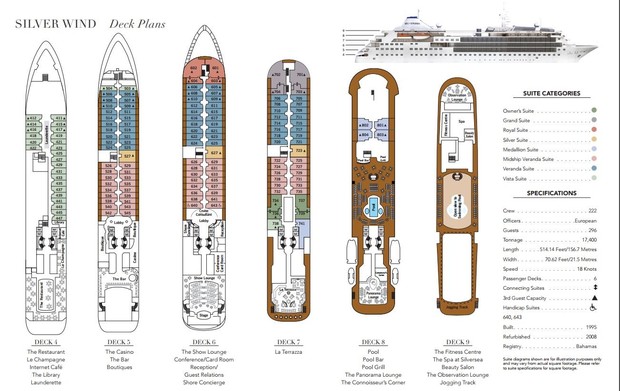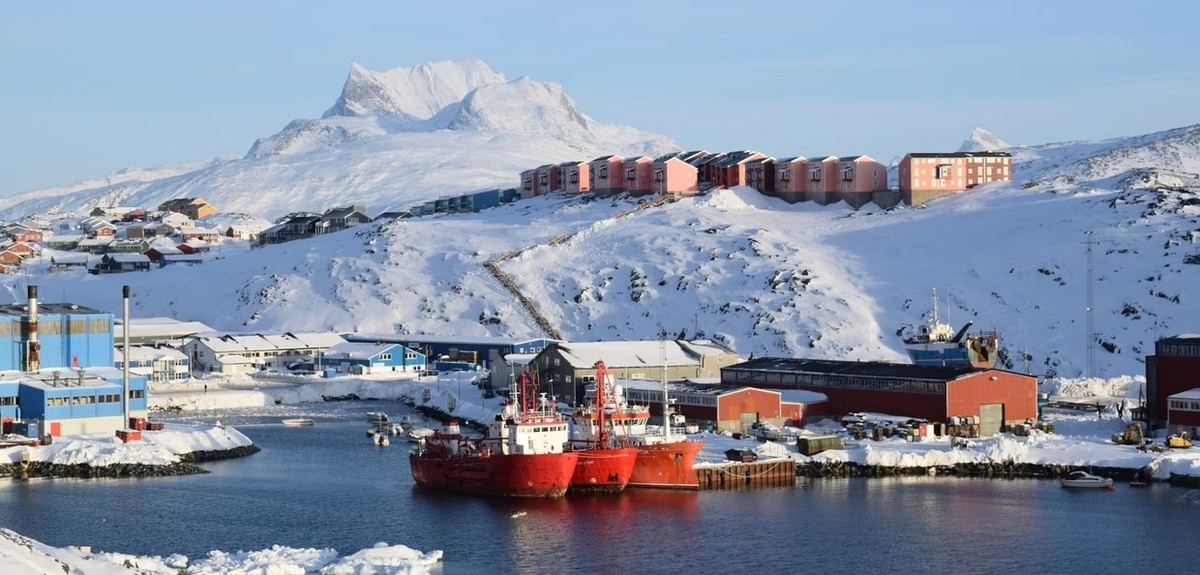
Journey into the legendary Northwest Passage, sailing from Greenland’s fjords into the storied wilderness of Nunavut on a thrilling 20-day voyage. Layered with explorer history and rich in wildlife encounters, begin amid Greenland’s soaring peaks and UNESCO-listed ice fjords. Enter the extraordinary Northwest Passage, where turquoise glaciers tumble and remote islands shelter rare seabirds. Weave between icebergs in search of polar bears, narwhals, and walruses.
- Traverse the heart of the Northwest Passage, combining Greenland’s monumental fjords with Canada’s most remote Arctic outposts.
- Encounter polar wildlife in its purest habitat, from narwhals and walruses to the possibility of polar bears along iceberg-strewn channels.
- Explore sites tied to legendary expeditions, landing at places like Beechey Island, Gjoa Haven, and Crozier’s Camp.
Availability is always subject to confirmation. Please check with us before booking flights
Prices quoted here are often dependent on currency fluctuations. Please check with (01432 507450 or info@small-cruise-ships.com) for the very latest price, which may well be cheaper than the one advertised here.

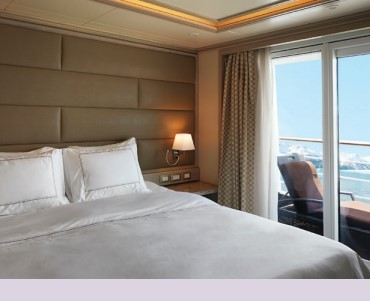
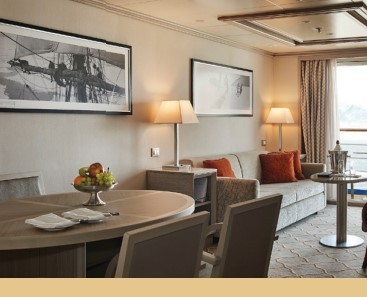
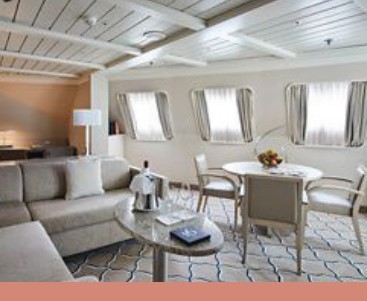





Pre Cruise Benefits - Hotel, Charter flights
In the bustling capital city of Greenland, you could be forgiven for forgetting you are in such a vast and isolated country. Nuuk is Greenland's economic and social hub, home to more than a third of Greenland's population, and although it feels like a world capital, scratch the surface, and a uniquely Greenlandic character can be found underneath. Nuuk Cathedral overlooks the gorgeous old Colonial Harbour district and the Greenland National Museum, resting place of the legendary Qilakitsoq mummies, the true highlight of the museum's archaeological collection. Above the Colonial Harbour sits downtown Nuuk, with lines of Scandistyle apartments, a bustling shopping district, the Greenlandic Parliament, Nuuk City Hall (which welcomes visitors to see its artwork), and even outdoor cafes selling locally produced food and beer. These nods to modernity compete for space with local artisan boutiques, the meat market selling the catch from Nuuk's vast fjord-lands, and the stunning Katuaq Cultural Centre, where blockbuster movies, as well as local and foreign performers, entertain the people of Nuuk. Although Nuuk has long been a melting pot of Danish and Greenlandic ideas, this is a city where Greenland displays its sophistication, with the Country's only traffic lights, roundabouts, and University. Most of all, expect to find a multitude of friendly people who are proud of who they are, and equally proud of the city they call home.
Some 60 kilometers southeast of the entrance to Kangerlussuaq Fjord and halfway between Maniitsoq and Kangaamiut is Sermilinnguaq, one of the smaller fjords leading to the Greenland Icecap’s westernmost valley glaciers in South Greenland. Northeast of Maniitsoq’s rugged scenery with peaks rising hundreds of meters into the sky, the narrow fjord with its steep mountainsides is one of the preferred halibut fishing areas for the local fishermen from Maniitsoq and Kangaamiut. In 2019, the Greenland Environment Fund granted resources to clean up and remove derelict fishing gear, which had washed up along the Sermilinnguaq Fjord based on the fishermen’s request. Razorbills, Brünnich’s Guillemots (Thick-billed Murres), Common Guillemots and Black Guillemots, Glaucous Gulls, and Black-legged Kittiwakes – all attracted by the rich fishing grounds - have formed eight bird colonies in Sermilinnguaq. As a result, 3,000 hectares of the fjord are considered an Important Bird Area.
Evighedsfjord (Eternity Fjord) is a large fjord northeast of Kangaamiut in southwest Greenland. The fjord has a length of 75 kilometers and several branches with numerous glaciers coming down from the Maniitsoq Ice Cap to the north can be seen. The Evighedsfjord has several bends and whenever the ship reaches the supposed end the fjord continues in another direction and seems to go on forever. Qingua Kujatdleq Glacier is at its southeastern end. At the northwestern end, a U-shaped valley has seven glaciers coming down from the mountains but not reaching the water. The glaciers had their maximum extent around the year 1870 and have gone through several cycles of advance and retreat. The mountains on either side of the fjord can reach in excess of 2,000 meters and the fjord has a depth of up to 700 meters. Evighedsfjord’s snowline is at 1,100 meters and the Evighedsfjord region is famous as one of Greenland’s best heli-skiing areas.
Sisimiut ("The People of the Fox Holes") is Greenland's second city, the largest Arctic City in North America, and a hub between the warmer South and the frozen North of the country. With a young, dynamic population, including students from all over the country, Sisimiut is one of the fastest-growing cities in Greenland. Inhabited for more than four and a half thousand years, the Danish Colonial Era saw the rapid development of the city into a trade center, and the old buildings and artifacts can be seen at Sisimiut Museum, a collection of beautifully restored buildings displaying everything from ancient turf houses to modern Inuit art. The local artisans are considered some of the best in Greenland and often sell their wares direct from their communal workshop in the harbor, where they barter with hunters for raw materials. Today, modern industry focuses on processing seafood and shipping; KNI, the state-run chain of general stores operating in even the most remote settlements is based in Sisimiut. Most residents still live in the colorful wooden houses Greenland is so well known for. Sisimiut's vast backcountry offers excellent opportunities for hiking and fishing, and the locals often use sled dogs or snowmobiles to get around their vast mountainous playground during the long winters. In the summer, one can walk as far as Kangerlussuaq International Airport, a trail also used for the grueling Polar Circle Marathon, one of the toughest endurance events in the world.
Known as the birthplace of icebergs, the Ilulissat Icefjord produces nearly 20 million tons of ice each day. In fact, the word Ilulissat means “icebergs” in the Kalaallisut language. The town of Ilulissat is known for its long periods of calm and settled weather, but the climate tends to be cold due to its proximity to the fjord. Approximately 4,500 people live in Ilulissat, the third-largest town in Greenland after Nuuk and Sisimiut. Some people here estimate that there are nearly as many sled dogs as human beings living in the town that also boasts a local history museum located in the former home of Greenlandic folk hero and famed polar explorer Knud Rasmussen.
Days at sea are the perfect opportunity to relax, unwind, and catch up with what you've been meaning to do. So whether that is going to the gym, visiting the spa, whale-watching, catching up on your reading, or simply topping up your tan, these blue sea days are the perfect balance to busy days spent exploring shoreside.
Located in northern Baffin Island Pond Inlet is a small predominantly Inuit community with a population of roughly 1,500 inhabitants. In 1818 the British explorer John Ross named a bay in the vicinity after the English astronomer John Pond. Today Pond Inlet is considered one of Canada's "jewels of the North" thanks to several picturesque glaciers and mountain ranges nearby. Many archaeological sites of ancient Dorset and Thule peoples can be found near Pond Inlet. The Inuit hunted caribou, ringed and harp seals, fish, polar bears, and walrus, as well as narwhals, geese, ptarmigans, and Arctic hares long before European and American whalers came here to harvest bowhead whales. Pond Inlet is also known as a major center of Inuit art, especially the printmaking and stone carving.
King William Island’s flat coastal terrain holds only one settlement. Although the area around Gjoa Haven had already been used by the Netsilik Inuit, the Scandinavian name was given to it by Amundsen during his crossing of the Northwest Passage when he overwintered for two years with his ship Gjøa in the natural harbor on King William Island’s southeastern side. 250 kilometers above the Arctic Circle the average temperature hovers around 0 degrees Celsius in September. Amundsen’s presence (with a ship full of interesting supplies specifically brought for trade) attracted Netsilik from camps in the vicinity. The Netsilik had been here at Usqsuqtuuq - meaning “place of plenty blubber” - because of the fat fish and sea mammals in nearby waters. In 1927 the Hudson’s Bay Company set up a trading post and the community has grown from then on. Today some 1,500 predominantly Inuit inhabitants live in Gjoa Haven. There is a path connecting several sites forming the Northwest Passage Territorial Trail, including the Heritage Centre, the Hamlet Centre - where one can learn about the early European explorers and their fate - and places used by Amundsen. Artifacts relating to Franklin’s expedition were found near Gjoa Haven and the wrecks of his two ships Erebus and Terror have recently been located not too far away. Although there are some muskoxen and caribou on the island, a different attraction for some is a nine-hole golf course, known to be Nunavut’s most northerly.
Beechey Island is a small island off the southwest coast of Devon Island, separated by a narrow waterway called the Barrow Strait. Captain William Edward Parry was the first European to visit the island in 1819. His lieutenant, Frederick William Beechey, named the island after his father, the artist William Beechey (1753–1839). Beechey Island played a significant role in the history of Arctic Exploration. During the winter of 1845-46, Sir John Franklin and his men camped on the island as part of their ill-fated quest to find the Northwest Passage. Mummified remains of three of Franklin’s crew were discovered, giving a better understanding of what happened before the disappearance of the expedition. In 1850 Edward Belcher used the island as a base while surveying the area. Later, in 1903, Norwegian explorer Roald Amundsen stopped at the island at the beginning of his successful voyage in search of the Northwest Passage. Subsequently, Beechey Island was declared a "Territorial Historic Site" by the Northwest Territories government in 1975 and a National Historic Site of Canada in 1993. It now is part of Nunavut.
Devon Island is Canada’s sixth-largest island and was first seen by Europeans in the early 17th century. The Thule culture had already settled there many centuries before, and left behind qarmat homes, made of rocks, whale bones, rock and sod walls, and skins for roofs that tell a story of over 800 years of human habitation. Other striking finds in this area are the many fossils of corals, crinoids, and nautiloids that can be seen. Just across Lancaster Sound is Prince Leopold Island, a Canadian Important Bird Area, a federally listed migratory bird sanctuary, and a Key Migratory Bird Terrestrial Habitat site with large numbers of Thick-billed Murres, Northern Fulmars, and Black-legged Kittiwakes that breed there.
Austere, remote, and rather severe, Devon Island is the closest thing to Mars on planet Earth. The rocky terrain, dry, cold climate, and 14-mile-wide crater on the north of the island have made it home for a team of research scientists from NASA, who live in the small research station during the Arctic summer. Other than these few men and women, Devon Island is completely unpeopled, and the largest uninhabited island in the world. There was human habitation as recently as 1951 when a Canadian Mounted Police post that had been on the island since 1924 to monitor illegal activities such as whaling closed. At 320 miles long and 80–100 miles wide, it is the largest of the Parry Islands. Dundas Harbor is found in the south of the island. The island is set in the icy Arctic Ocean, south of Ellesmere Island and west of Baffin Bay. This makes it Canada’s sixth-largest island. Discovered by English explorer William Baffin in 1616, the island did not make it onto any maps until William Edward Parry’s exploration of the Arctic in 1820. Despite the desolate conditions, the island does show signs of having sustained human life as many as 3,000 years ago, with the remains of a Thule settlement dating back to 1000 A.D., including tent rings, middens, and a gravesite providing testament to the fact. The island is named Talluruti in the local Inuktitut language, literally translating as “a woman’s chin with tattoos on it”, as from a distance the deep crevasses resemble traditional facial tattoos.
Days at sea are the perfect opportunity to relax, unwind, and catch up with what you've been meaning to do. So whether that is going to the gym, visiting the spa, whale-watching, catching up on your reading, or simply topping up your tan, these blue sea days are the perfect balance to busy days spent exploring shoreside.
Sitting above the Arctic Circle, visit a land of wonderful extremes, where polar bears roam, and the vastness of scenery is all-encompassing. Taking its name from the Inuktitut word for Big Island - Qikiqtarjuaq, is a place of long, summer nights that feel eternal, and contrast with the inky depths of winter. These blackened nights are illuminated by the ethereal glow of the Northern lights dancing over huge mountain peaks. A small community resides in this remote and wonderful setting, on the sheltered western shore of Broughton Island, separated from Baffin Island by a relatively narrow channel. Across this gap, the majestic, staggeringly tall mountains of Auyuittuq National Park rise. These are some of the continent’s most spectacular peaks, of poetic form and grandeur. The icy waters surrounding Qikiqtarjuaq are strewn with icebergs beginning long journeys, earning the island its title as Nunavut’s ‘Iceberg Capital’. While ice floes drift serenely on the surface, giants move in the depths - and the waters are visited by wildlife such as narwhals, bowhead whales, seals, and orcas. The skies above, meanwhile, are often alive with seabirds, particularly the Northern Fulmar. Cruise along the beautiful shoreline and take to Zodiacs for a deeper level of exploration, seeking out the wonderful wildlife of the region with our expert team on hand to identify the animals and share their fascinating insights into this wonderful region.
Days at sea are the perfect opportunity to relax, unwind, and catch up with what you've been meaning to do. So whether that is going to the gym, visiting the spa, whale-watching, catching up on your reading, or simply topping up your tan, these blue sea days are the perfect balance to busy days spent exploring shoreside.
The Lower Savage Islands are a small group of islands off of the southeastern tip of Baffin Island, and a common location for polar bears to be found during the summer months. With plenty of land to roam while giving each other a wide berth, plus opportunities to feed, it seems perhaps bears can be found here as the ice vanishes with the summer season’s warming temperatures.
Monumental Island is a splinter of ancient metamorphic rock, hunching in the frigid waters of the Davis Strait, defying the ocean and ice around it. Named to honor the legendary Polar Explorer Sir John Franklin, the island displays at times displays everything Nunavut has to offer, in an ocean studded with vast icebergs drifting across from Greenland. Monumental Island is a well-known den site for polar bears, the icon of the Arctic; there is a good chance to see mother bears with cubs on the island, as the bears become trapped by the lack of summer ice, using the island as a base to hunt until the ice returns in the Autumn. Seeing the white silhouette of a polar bear against the ancient black rock and autumn tundra colors is an experience that will remain long after returning on board. Groups of harp seals are a common sight in the waters around Monumental Island and can be very curious, often swimming very close to investigate new objects such as boats. There are several sites on the island also used as haul-out sites for the charismatic Atlantic Walrus. These vast animals are surprisingly gentle and skittish, and can often be observed caring for their calves on the rock bluffs while keeping a careful watch for polar bears. Almost nowhere else in Nunavut can the charismatic wildlife of the Arctic be observed in such a stunning setting.
Named in honor of Sir John Franklin’s widow, the lonely and uninhabited Lady Franklin Island lies off of Baffin Island’s Hall Peninsula at the entrance to Cumberland Sound. The island is named for the wife of Sir John Franklin, the Arctic explorer who died trying to discover the Northwest Passage. The geology of the island is striking with vertical cliffs of Archean rocks, likely to be some of the oldest stone in Canada. The waters around Lady Franklin Island offer an abundance seabirds, ducks, seals, and walrus. With a bit of luck, it is possible to see Atlantic Puffins here and perhaps even a rare Sabine’s Gull.
Days at sea are the perfect opportunity to relax, unwind, and catch up with what you've been meaning to do. So whether that is going to the gym, visiting the spa, whale-watching, catching up on your reading, or simply topping up your tan, these blue sea days are the perfect balance to busy days spent exploring shoreside.
In the bustling capital city of Greenland, you could be forgiven for forgetting you are in such a vast and isolated country. Nuuk is Greenland's economic and social hub, home to more than a third of Greenland's population, and although it feels like a world capital, scratch the surface, and a uniquely Greenlandic character can be found underneath. Nuuk Cathedral overlooks the gorgeous old Colonial Harbour district and the Greenland National Museum, resting place of the legendary Qilakitsoq mummies, the true highlight of the museum's archaeological collection. Above the Colonial Harbour sits downtown Nuuk, with lines of Scandistyle apartments, a bustling shopping district, the Greenlandic Parliament, Nuuk City Hall (which welcomes visitors to see its artwork), and even outdoor cafes selling locally produced food and beer. These nods to modernity compete for space with local artisan boutiques, the meat market selling the catch from Nuuk's vast fjord-lands, and the stunning Katuaq Cultural Centre, where blockbuster movies, as well as local and foreign performers, entertain the people of Nuuk. Although Nuuk has long been a melting pot of Danish and Greenlandic ideas, this is a city where Greenland displays its sophistication, with the Country's only traffic lights, roundabouts, and University. Most of all, expect to find a multitude of friendly people who are proud of who they are, and equally proud of the city they call home.
Post Cruise Benefits - Hotel
Itineraries are subject tot change.
Silver Wind
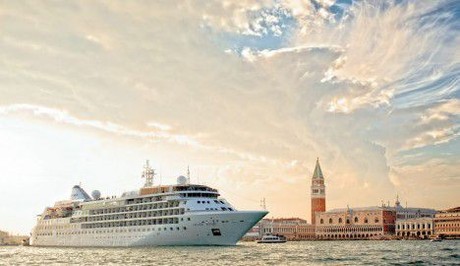
| Maximum number of passengers | 296 |
|---|---|
| Crew: 222 | 222 |
| LENGTH: | 514.14 Feet / 156.7 Meters |
Al fresco dining with panoramic ocean views. Warm clubby spaces for evening cocktails with friends. The plush comfort of your ocean-view suite after a day of incredible sights. Welcome home to the luxury cruise ship, Silver Wind. Timelessly elegant yet luxuriously relaxed, Silver Wind strikes the perfect balance of yacht-like intimacy combined with the space, amenities and diversions typically reserved for larger vessels. Warm welcomes and gracious personalized service inspire our guests to call Silver Wind their “home away from home” - join us and discover the charms of Silver Wind.
Silversea's oceanview suites are some of the most spacious in cruising, and all include the services of a butler.
Deck plans are for illustrative purposes only – The actual ship and cabin layout may differ.
